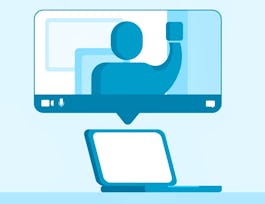This course is an ideal introduction into creating virtual environments in Android. This course is unique as it covers a range of tools and techniques to create immersive 3D environments, giving you a rounded skill set in this growing field. By the end of this course, you will really be able to bring your VR ideas to life!



3D Graphics in Android: Sensors and VR
This course is part of Advanced App Development in Android Specialization

Instructor: Benny Lo
Sponsored by Syrian Youth Assembly
10,966 already enrolled
(15 reviews)
Recommended experience
Details to know

Add to your LinkedIn profile
7 assignments
See how employees at top companies are mastering in-demand skills

Build your subject-matter expertise
- Learn new concepts from industry experts
- Gain a foundational understanding of a subject or tool
- Develop job-relevant skills with hands-on projects
- Earn a shareable career certificate


Earn a career certificate
Add this credential to your LinkedIn profile, resume, or CV
Share it on social media and in your performance review

There are 4 modules in this course
In this first module, we're going to look at some core functions which we can use within Android to create 3D objects and scenes. We'll begin by looking at how we can add animation to 3D objects and make these interactive using touch control. We'll then look at using lighting and reflection to make our 3D objects look more realistic.
What's included
10 videos4 readings3 assignments2 discussion prompts
In this module, we're going to look at making scenes and objects even more realistic. We'll begin by learning how to apply textures to objects. We'll then look at creating multiple 3D objects and how to combine these using transparency and blending.
What's included
9 videos3 readings1 assignment2 peer reviews2 discussion prompts
In this module, we'll build on the topics we've covered so far to create interactive virtual environments. We'll begin by looking at what sensors are available on Android phones and how we can use them. We'll then look at the frame buffer and the effects we can produce with it. Finally, we'll look at implementing the VR binocular view.
What's included
9 videos2 readings3 assignments1 peer review2 discussion prompts
In this final module, you will apply everything you have learned into a summative assignment by creating a VR app which uses binocular view.
What's included
1 video1 reading1 peer review1 discussion prompt
Instructor

Offered by
Why people choose Coursera for their career




Recommended if you're interested in Computer Science

Georgia Institute of Technology

University of California, Irvine

Open new doors with Coursera Plus
Unlimited access to 10,000+ world-class courses, hands-on projects, and job-ready certificate programs - all included in your subscription
Advance your career with an online degree
Earn a degree from world-class universities - 100% online
Join over 3,400 global companies that choose Coursera for Business
Upskill your employees to excel in the digital economy




